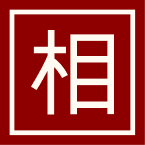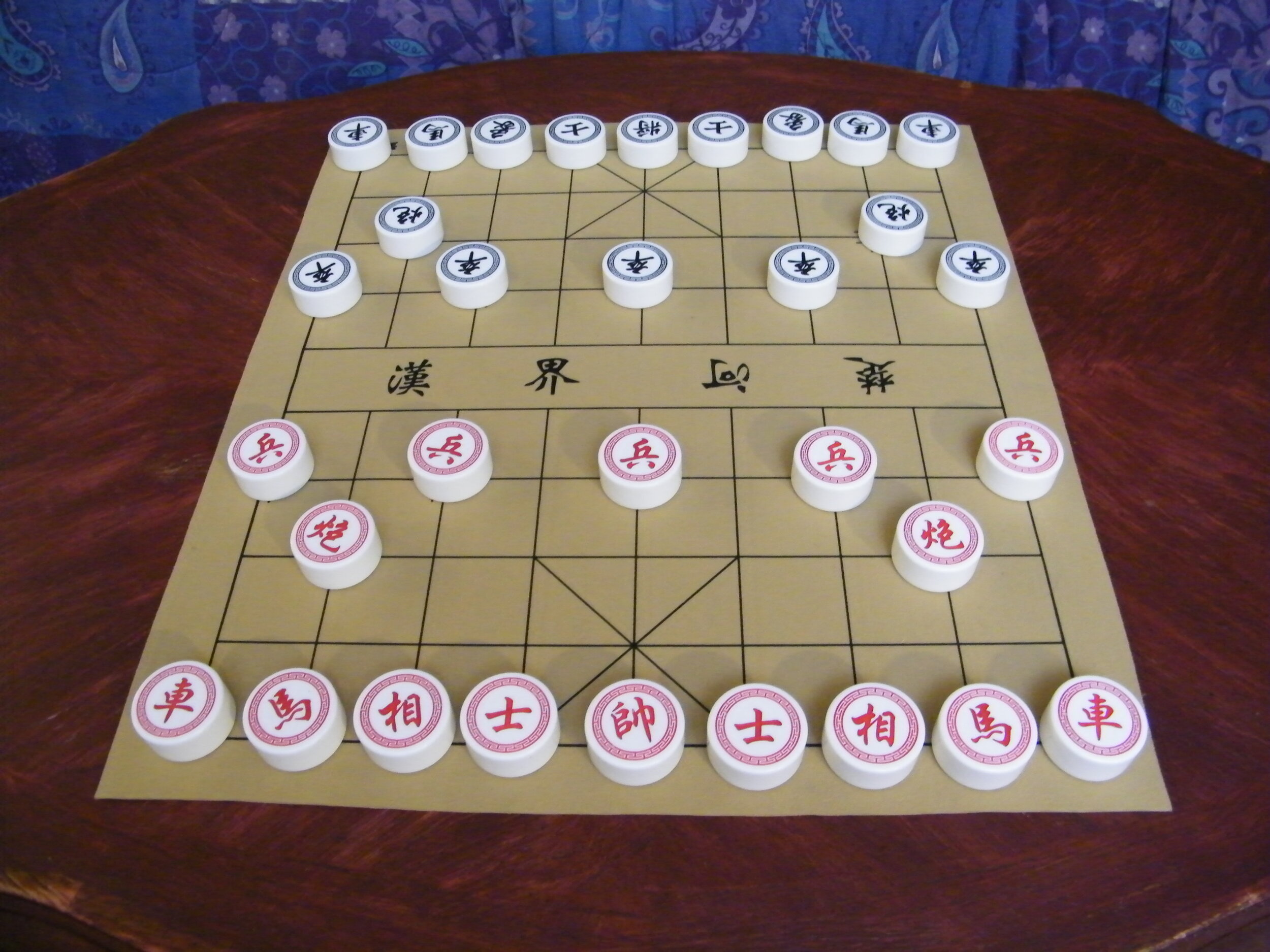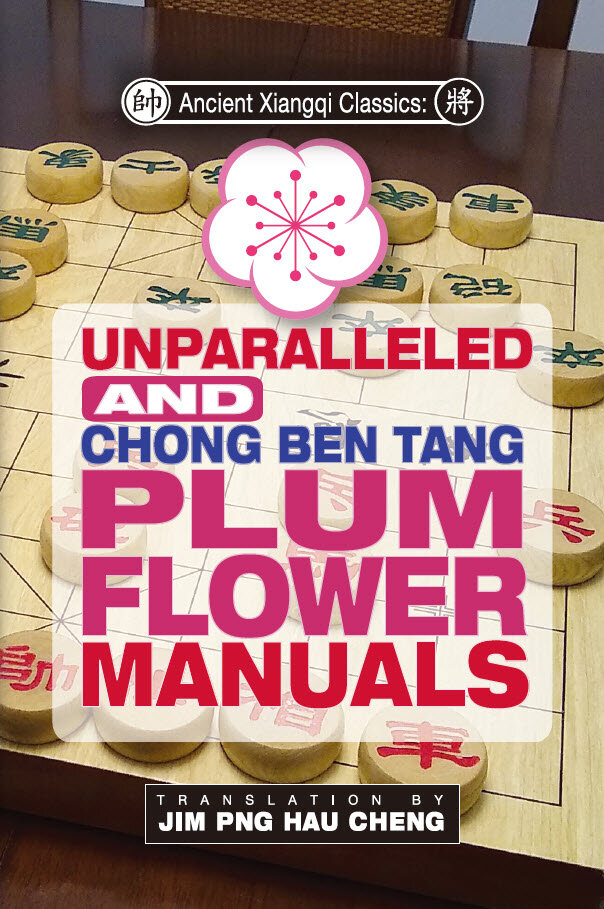A Short Introduction to the Xiangqi Manuals in the Qing Dynasty Part 2
Author: Jim Png from XqInEnglish
This article is a continuation of the introduction of the Xiangqi ancient manuals in the Qing Dynasty Part 1. Please refer to Part 1 of the article if you have not read it.
The contents of Part 2 are as follows:
Lan Ke Shen Ji
《烂柯神机》 làn kē shén jī
Author/Editor: Yu Guozhu (于国柱 yú guó zhù)
Year: 1843 or 1844 AD
Notes:
There were 121 problems in the original ancient manual, which were divided into four volumes. Yu Guozhu created all the problems, but they were less sophisticated than the problems given in the other ancient manuals. There were also many mistakes.
Nevertheless, it was a breath of fresh air to see new content at that time.
There is another ancient manual that has a very similar name, Lan Ke Zhen Ji. These two books are different!
The ancient manual has been translated into English by the author.
Entire Games of Xiangqi
《象棋满盘谱》 xiàng qí mǎn pán pǔ
Author/Editor: Chen Xiyi (陈希夷chén xī yí )Chen Tuan (陈搏 Chén Tuán) ???
Year: 1849AD finished, published 1871 AD
Notes:
This ancient manual was probably an attempt by booksellers to make money. The contents were partial contents of The Secret in the Tangerine. Three boards were copied from Strategic Considerations.
What made modern-day Xiangqi scholars felt that it was an attempt to make money was the fact the original author was supposed to be Chen Tuan (陈搏 Chén Tuán), the Song Dynasty Taoist hermit who was supposed to have defeated the founding Emperor of the Song Dynasty, Zhao Kuangyin. That ‘historical incident’ was incredulous by itself. Modern-day Xiangqi is believed to have taken in the late Song Dynasty, not the beginning of the Dynasty.
Chen Xiyi was supposed to have edited the contents into a book that consisted of four volumes.
Leisurely Activities at the Window by the Fields
《蕉窗逸品》 jiāo/qiáo chuāng yì pǐn
Author/Editor: Gu Shunchen (顾舜臣 gù Shùn chén)
Year: 1879AD
Notes:
This ancient manual was initially part of a series of books, but was later printed and sold independently. There were only eleven problems in the book. Still, they included the more important or famous endgame compositions like the Gathering of the Seven Stars, Wild Horses Roaming Fields, et cetera. Most of the content seemed to have originated from One Hundred Boards of Xiangqi.
Like Wang’s Plum Flower Manual, a ninety-word poem made up of unique Chinese characters was used as the notation.
Revised Brilliant Variations Xiangqi Manual
《新增神妙变化象棋谱》 xīn zēng shén miào biàn huà xiàngqí pǔ
Author/Editor: ()
Year: 1866AD
Notes:
This ancient manual was supposed to be another attempt by booksellers to make money. There were fifty-five problems in the book, which were divided into two volumes. One of the volumes consisted of only Red-win problems, while the other volume consisted of only problems that ended in draws. Most of the content was replicated from One Hundred Variations of Xiangqi. But nineteen boards were unique.
Lan Ke Zhen Ji
《烂柯真机》 làn kē zhēn jī
Author/Editor: Unknown
Year: 1896 AD
Notes:
There are currently three different versions, perhaps by various publishers of the book, that are still extant. In one of the versions, there were only 26 problems, while the other two versions had 30 problems. The contents were identical, but the quality of the problems left much to be desired. There were many mistakes, but modern-day Xiangqi endgame composers have managed to find gold in some of the problems after refining the problems.
Recluse of the Bamboo Xiangqi Manual
《蕉竹斋象棋谱》 jiāo/qiáo zhú zhāi xiàng qí pǔ
Author/Editor: Unknown
Year: 1910AD
Notes:
The author of the book was not known, but it was believed that it was an attempt by Xiangqi enthusiasts in Hangzhou to collect the popular or commonly seen problems of their time.
Several versions are still extant. Modern-day endgame composers Wei Zidan (魏子丹wèi zǐ dān), Ding Zhangzhao (丁章照 dīng zhāng zhào) and Yang Mingzhong (杨明忠 yáng míng zhōng) got together and after much effort, managed to rearrange the available versions and published their work 1976. There were 114 boards when the book was given.
Cliff by the Lake Collections
《湖涯集》 hú yá jí
Author/Editor: Unknown
Year: Unknown
Notes:
Endgames of the Secret in the Tangerine (《橘中秘残局》 jú zhōng mì cán jú) was another name of the ancient manual.
The notation given followed Wang Zaiyue’s ninety-word poem.
There were 58 boards which were probably the boards used by street hustlers of their time. The only extant version was gifted by Hangzhou’s Xu Youzhi (许有之)to Shanghai’s Tu Jingming (屠景明). Not much else was known about the book except that it was very old.
Hui Zhen Ge
《会珍阁》 huì zhēn gé
Author/Editor: Zhou Tingmei (周廷梅)?
Year: Unknown
Notes:
This ancient manual was initially mentioned in Xie Xiaxun’s Encyclopedia of Xiangqi Manuals, and its existence was initially doubted. However, in the 1950s, the late controversial endgames specialist Lin Youru (林幼如 ?-? lín yòu rú). There were only twenty endgames in Lin Youru’s version, but they were relatively sophisticated. Somehow, Lin’s book was later published in Taiwan. There is not much else to know about the ancient manual.
Zhou Tingmei is more well known for another manual, the Unparalleled Plum Flower Manual.
An Old Xiangqi Manual
《象棋老谱》 象棋老谱
Author/Editor: Huang Shenzhong (黄慎忠 huáng shèn zhōng) and Li Jinbu (李锦补 lǐ jǐn bǔ)
Year:
Notes:
There was not much information about the ancient manual, which contained 42 problems. There were similarities to One Hundred Boards of Xiangqi and Strategic Considerations, but there were also problems that could not be found in other ancient manuals.
The notation was also interesting and unique. The numbering of the files started from left to right for both colors. There was another catch: once a piece crossed the river, it would use the notation on that side of the board. For example, if a Pawn on the edge file crossed the river with P9+1 and continued to advance, the notation referring to the Pawn before crossing the river would be P9+1. After crossing the river, the notation would be P1+1. No other ancient manuals demonstrated such a form of notation.
Nothing else is known about the authors.
Wu’s Plum Flower Manual
《吴著梅花谱》Wú zhù méi huā pǔ
Author/Editor: Wu Meisheng (吴梅圣 Wú méi shèng)
Year: Unknown year, but it was published in 1929.
Notes:
The original name of the ancient manual was 《象棋让先秘谱》 (xiàng qí ràng xiān mì pǔ)
The author, whose date of birth and passing away was not known, was from the Qing Dynasty. The ancient manual was initially a hand-copied version. Ningbo’s Xu Baokang (徐葆康xú bǎo kāng) analyzed the ancient manual in 1928 and published it in 1929 under its original name. As his original work was sophisticated, Wu Meisheng was compared to Wang Zaiyue, and his book was called Wu’s Plum Flower Manual.
In the original work, there were only five boards with 25 variations. Xu Baokang added a few more variations such that there were 49 variations in all. Like Wang Zaiyue, Wu Meisheng believed that the Screen Horse Defense was superior to the Central Cannon.
The first board was the Screen Horse Defense defeating Red’s Central Cannon with Filed Chariot. (屏风马破当头炮直车局 píng fēng mǎ pò dāng tóu pào zhí jū)
The second board was the Screen Horse Defense defeating Red’s Central Cannon with Ranked Chariot. (屏风马破当头炮横车局 píng fēng mǎ pò dāng tóu pào héng jū)
The third board was the Screen Horse Defense defeating Red’s Central Cannon Opening with Centrally linked Horses Variation. (屏风马破士角炮夹马局 píng fēng mǎ pò shì jiǎo pào jiā mǎ jú)
The fourth board was the Screen Horse Defense defeating Red’s Horse Opening with Palcorner Cannon Variation. (屏风马破士角炮局 píng fēng mǎ pò shì jiǎo pào jú)
The fifth board was the Screen Horse Defense defeating Red’s Elephant Opening with Elephant-eye Horse Variation (屏风马破转角马局 píng fēng mǎ pò zhuǎn jiǎo mǎ jú)
Xin Juan Jin Peng Bian Fa Xiang Qi Pu
《新镌金鹏变法象棋谱》 xīn juān jīn Péng biàn fǎ xiàngqí pǔ
Author/Editor: Unknown
Year: Unknown
Notes:
This ancient manual was nearly lost had it not for Liu Guobin (刘国斌 Liú guó bīn) who discovered partial contents of the book. There only 17 pages that could be salvaged, and the contents were similar to One Hundred Boards of Xiangqi. According to Liu Guobin, two unique problems were not found in other ancient manuals.
New Selected Xiangqi Manual
《新选象棋谱》 xīnxuǎn xiàngqí pǔ
Author/Editor: Unknown
Year: Unknown
Notes:
There was only a wooden version that was found. It contained twelve endgame compositions that could be found in Strategic Considerations.
Xiao Guzi’s Xiangqi Manual
《效古子象棋谱》 xiào gǔ zǐ xiàng qí pǔ
Author/Editor: Unknown
Year: Unknown
Notes:
There were two volumes to this ancient manual. There were twenty pages to the ancient manual and nineteen boards from One Hundred Boards of Xiangqi. The only extant volume was collected by the laste Xiangqi endgame composer Sun Jingcun (孙经存sūn jīng cún). Not much else was known about it.
Mei Hua Wu Zi Bian
《梅花五子变》 méi huā wǔ zǐ biàn
Author/Editor: Unknown
Year: Unknown
Notes:
There was only a hand-copied manual still extant that was kept by Liu Guobin. The contents were from the Invincible after Coming Out of the Caves ancient manual.
The notation used was also a ninety-word poem where each unique Chinese character represented a coordinate. The poem, however, was special to the manual.
A Compilation of Xiang Xi
《象戏汇编》 xiàng xì huì biān
Author/Editor: (半闲居士bàn xián jū shì)?
Year: Unknown
Notes:
There is only one extant copy of the ancient manual. It was a study and refinement of Wang Zaiyue’s Plum Flower Manual. While Wang’s Plum Flower Manual had 105 Variations, there were 311 Variations in A Compilation of Xiang Xi, and some of the older variations were deleted. A poem was used for the notations. Not much else was known about the manual.
Xiang Xi (象戏xiàng xì) is one of the ancient names for Xiangqi.
Mei Hua Bian Fa Xiang Qi Pu
《梅花变法象棋谱》méi huā biàn fǎ xiàng qí pǔ
Author/Editor: ()
Year:
Notes:
There was only a hand-copied version that is still extant. There were twelve boards with 104 variations and an article on the theory of Xiangqi.
Zheng Zimei (郑自梅Zhèng zì méi) had proofread/edited the book in 1897AD, and the current extant ancient manual is kept by Huang Delin (黄德林huáng dé lín) from He-nan province.
Shan Qing Tang Edited Plum Flower Variations
《善庆堂重订梅花变》 shàn qìng táng chóng dìng méi huā biàn
Author/Editor: Unknown
Year: Unknown
Notes:
There were three scrolls to the ancient manual. There was no preface or other information that could tell us who the author was or when the ancient manual was published.
In Scroll One, there were three boards with 56 variations.
In Scroll Two, there were six boards with 70 variations.
In Scroll Three, there were six boards with 35 Variations.
In total, there were 15 boards with 161 Variations.
Anti-Plum Flower Manual
《反梅花》fǎn méi huā
Author/Editor: Ba Jiren (巴吉人bā jí rén)
Year:
Notes:
This ancient manual was one of the more well-known ‘Plum Flower Manuals.’ It was written by Ba Jiren from Zhenjiang, Jiangsu. 《象棋梅花心法谱》 xiàng qí méi huā xīn fǎ pǔ was the original name of the book. If translated, the title would be Xiangqi Plum Flower Mental Methods Manual. The author has not been able to find the English for 心法, which refers to the passage or words that teach you how to master a skill.
Ba was one of the best in his time. Ba felt that the moves given in Wang Zaiyue’s Plum Flower Manual were overly biased in Black’s favor and proceeded to improve upon Wang’s work. There was also some bias in Ba’s work, but he managed to prove that the Central Cannon was still viable as a Red opening. As a result, his work has been called the Anti-Plum Flower Manual.
There are several extant versions of Ba’s work.
In one version, there were seven boards with 18 variations and eight boards with 17 variations in a second extant version. There is a third version with 12 boards with 20 Variations.
Ba’s work represented the level of Xiangqi towards the end of the Qing Dynasty.
Chong Ben Tang’s Plum Flower Manual
《崇本堂梅花秘谱》 chóng běn táng méi huā mì pǔ
Author/Editor: ()
Year: 1865AD?
Notes:
There is another name to the ancient manual:《摘精梅花谱》 zhāi jīng méi huā pǔ. If translated, it would be Refined Essentials of the Plum Flower Manual.
There were two scrolls to the ancient manual that were divided combined into one publication. It contained 20 boards with 79 variations, and its content was similar to the Plum Flower Springs Manual. After comparison, modern-day Xiangqi experts believe that it was not the same as the Plum Flower Springs Manual. Instead, it might have been derived from a hand-copied version of the ancient manual with improvements.
The ancient manual was rediscovered in 1956 at a bookstore selling old books in Shanghai.
Unparalleled Plum Flower Manual
《无双品》wú shuāng pǐn
Author/Editor: (周廷梅 ?-? zhōu tíng méi)
Year:
Notes:
The title of the book was suggested by Lin Youru in the 5th edition of his Xiangqi Monthly (《象棋月刊》xiàng qí yuè kān) magazine back which was published back in December of 1948. According to Lin Youru, Zhou Tingmei improved on Wang’s work and increased the contents from eight boards to twelve boards. Twenty variations were also added. Zhou had carried on the theme of the Screen Horse Defense being superior to the Central Cannon.
The ancient manual was later published by the late Tu Jingming to preserve the ancient manual.
The author has translated and published both the Unparalleled Plum Flower Manual and Chong Ben Tang’s Xiangq manual into one book in English.
Summary
Contrary to what Murray wrote, many Xiangqi manuals, treatises, books on problems, et cetera had been reported since the Southern Song Dynasty. While most of these books were indeed books on problems (endgame compositions, as Murray mentioned), books on openings were not lacking. There was also rudimentary Xiangqi theory on the opening, endgame, and advice on playing the game.
The author is trying to get all the ancient manuals translated in this lifetime to preserve the culture of Xiangqi.
References
1. 张, 如安. 中国象棋史. 北京 : 团结出版社, 1998. 7-80130-170-6.
2. 程明松, 杨明忠 和 屠景明. 中国象棋谱大全. 成都 : 成都时代出版社, 2007 重印. 页 1788. 9787805485294.
3. 陈继儒(晚明). Wan Bao Quan Shu 万宝全书. [编辑] (清)毛焕文. 卷 12.
4. (清)毛焕文. 增补万宝全书. 1739. 卷 12.






